I’m excited to share with you a glimpse into a fascinating aspect of Southern Africa’s rich biodiversity: birds with long, flamboyant tails. These birds are not just a treat for the eyes; their extended plumage plays a crucial role in their survival and mating strategies.
In this overview, I’ll set the groundwork for what to expect as we explore the varied species that flaunt these impressive tails in countries from South Africa to Angola, and beyond.
Diverse Avian Splendors: A List of 11 Long-Tailed Birds
The southern regions of Africa boast an extraordinary array of bird species distinguished by their elegant, lengthy tails.
Beyond their aesthetic splendor, these tails often serve essential functions ranging from aerial acrobatics to intricate courtship displays.
Here’s an enthralling overview:
THE AFRICAN PARADISE FLYCATCHER – Terpsiphone viridis
With tails that could rival the ribbons of rhythmic gymnasts, these beauties flutter across several southern African skies, their distinctive streamers in tow.
While numerous flycatcher species exist, this undoubtedly reigns supreme in beauty, thanks in part to the male’s breathtakingly long tail.

In the table below, I have all the features of this tropical bird summarized for you.
| Feature | Description |
|---|---|
| Colors | Male: black, iridescent head, bold chestnut upperparts, and greyish underparts. A Blue bill and eye-ring complete his stunning ensemble. Female: More understated than her male counterpart, she sports a blend of browns and greys throughout, with a darker brown head and shorter tail. |
| Size | Length: 18–22 cm (7.1–8.7 in) |
| Weight | Approximately 8-12 grams (0.28-0.42 oz) |
| Tail Length | Average tail length: Around 30-35 cm (11.8-13.8 inches)( , thin and delicate |
| Countries | Found in various countries in Sub-Saharan Africa |
| Habitat | Tropical and subtropical forests, often near water sources such as rivers or streams. They prefer dense vegetation for nesting and hunting insects. |
| Eating habits | Primarily insectivorous, feeding on flying insects like flies, moths, and beetles. May also eat berries and small fruits. |
| Mating rituals | The male performs elaborate courtship displays, including aerial acrobatics and displaying its long tail feathers. The female builds the nest and incubates the eggs alone. |
| Conservation status | Generally not globally threatened (Least Concern), but some populations may be declining due to habitat loss and fragmentation. |
THE SHAFT-TAILED WHYDAH – Vidua regia
Their striking tail feathers, which can grow several times the length of their bodies during the breeding season, are nothing short of a spectacle. Spotted in open grasslands and savannas, Whydahs are a dance of evolution. Shaft-tailed Whydah flits around, another example of a long-tailed avian. Uniquely, this bird prefers taller trees, rarely seen on the ground unless it’s foraging for seeds.

| Feature | Description |
|---|---|
| Colors | Male (breeding): Black body with yellowish-buff on chest and belly, white wing patches with white wing patches and red bill. Long, black tail during breeding season. Male (non-breeding & female): Brownish-gray with streaked patterns. |
| Size | 11-13 cm (4.3-5.1 in) length |
| Weight | 12-18 grams (0.42-0.63 oz) |
| Tail Length | Male (breeding): Up to 15 cm (5.9 in) long tail. Male (non-breeding & female): Short tail. |
| Countries | Sub-Saharan Africa (except Congo Basin and western Angola). Introduced populations in other regions. |
| Habitat | Open grasslands, savannas, and agricultural areas with tall grasses for nesting and open spaces for displays. |
| Eating Habits | Omnivorous, feeding on seeds, grains, insects, and occasionally small fruits. Males may engage in kleptoparasitism by stealing food from other birds. |
| Mating Rituals | Males perform elaborate aerial displays with long tail feathers to attract females. Polygynous, mating with multiple females. |
| Conservation Status | Least Concern globally. Localized threats due to habitat loss and fragmentation. Introduced populations require separate assessments. |
THE MAGPIE SHRIKE – Urolestes Melanoleucus.
Recognizable by their elongated, iridescent tails, which they use deftly for communication and balance, magpie shrikes are a common sight in woodland areas.

| Feature | Description |
|---|---|
| Colors | Adult: Glossy black head and mantle, white scapulars, V-shaped greyish-white rump, black wings with white markings. Female: Additional white patch on flanks. Immature: Browner and duller with buffy-white areas and dark brown underparts with white-tipped feathers. |
| Size | 24-28 cm (9.4-11.0 in) length |
| Weight | 70-100 grams (2.5-3.5 oz) |
| Tail Length | Long, graduated tail |
| Countries | Eastern and southeastern Africa, in dry savannah, moist savannah, and subtropical or tropical dry shrubland. |
| Habitat | Open savanna, sparse broadleaf woodland, sometimes disturbed areas with Acacia tree stands. |
| Eating Habits | Carnivorous, feeding on insects, small vertebrates, lizards, and occasionally fruit. |
| Mating Rituals | Monogamous pairs perform synchronized displays with head-bowing and calling. |
| Conservation Status | Least Concern globally, but populations may be declining due to habitat loss and fragmentation. |
THE PIN-TAILED WHYDAH – Vidua macroura
Meet the Pin-tailed Whydah, a captivating songbird adorned with sleek black plumage and a captivating dance during the breeding season. But wait, there’s more to this fascinating avian artist than meets the eye! Let’s explore its characteristics in detail:

| Feature | Description |
|---|---|
| Colors | Adult males present a black back and crown, coupled with a notably long black tail. Their wings display dark brown shades with distinctive white patches. Underparts and the head (excluding the crown) are predominantly white. The bill stands out with its bright red coloration. In contrast, females and non-breeding males feature streaked brown upperparts and whitish underparts with buff flanks. They exhibit a buff and black facial pattern. Immature birds resemble females but with less prominent markings and a subtler, greyish bill. |
| Size | 10-13 cm (3.9-5.1 in) length |
| Weight | 8-12 grams (0.28-0.42 oz) |
| Tail Length | Male (breeding): Up to 20 cm long pin-shaped tail feathers. |
| Countries | Sub-Saharan Africa (except for the Congo Basin and western Angola). Introduced populations exist in other regions. |
| Habitat | Open grasslands, savannas, and agricultural areas with tall grasses for nesting and open spaces for displays. |
| Eating Habits | Primarily seed-eaters, feeding on grass seeds and grains. May also consume insects occasionally. |
| Mating Rituals | Males perform elaborate aerial displays with long tail feathers to attract females. Polygynous, mating with multiple females. |
| Conservation Status | Least Concern globally. However, habitat loss and fragmentation in their native range may pose localized threats. Introduced populations may face different conservation challenges. |
THE LONG-TAILED PARADISE WHYDAH –Vidua paradisaea
Sporting a spectacular tail that’s several times its body length, it’s unmissable during the breeding season. Native to southern regions, this bird shows a stark contrast in color, with a vivid black and white body. Botswana’s Okavango Delta, a lush oasis in the heart of the Kalahari Desert, is a paradise for the Long-tailed Paradise Whydah.
So, without further ado, let’s delve into its characteristics:

| Feature | Description |
|---|---|
| Colors | Male (breeding): Black body with contrasting white patches on shoulders and wings, red bill. During breeding season, develops incredibly long black tail feathers. Male (non-breeding & female): Black and white contrasting head pattern, brownish-gray upperparts, and buffy-white underparts. |
| Size | 11-13 cm (4.3-5.1 in) length |
| Weight | 12-18 grams (0.42-0.63 oz) |
| Tail Length | Male (breeding): Up to 30 cm (11.8 in) long tail feathers. Male (non-breeding & female): Short tail. |
| Countries | Sub-Saharan Africa (except for the Congo Basin and western Angola). |
| Habitat | Savannas, open woodlands, grasslands, and cultivated areas with scattered trees or shrubs. |
| Eating Habits | Primarily seed-eaters, feeding on grass seeds and grains. May also consume insects occasionally. |
| Mating Rituals | Males perform elaborate aerial displays with long tail feathers to attract females. Polygynous, mating with multiple females. |
| Conservation Status | Least Concern globally. However, habitat loss and fragmentation may pose localized threats. |
Want to find the best binoculars for a safari? Check out my blog post here!
THE FAMOUS CAPE SUGARBIRD – Promerops cafer
Now, the Cape Sugarbird I have talked about before, because it has a glamorous reputation that everybody wants to know about 😉
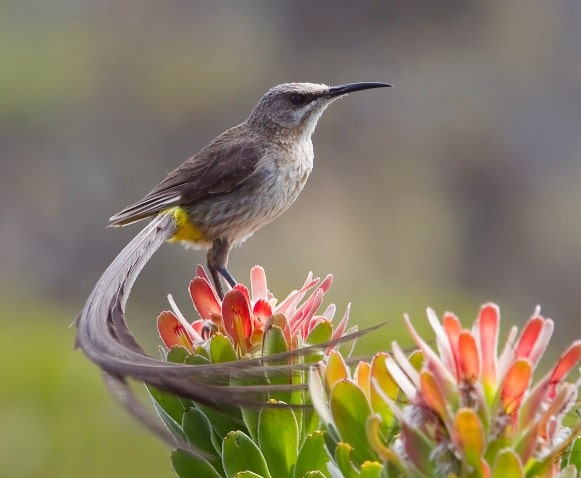
| Feature | Description |
|---|---|
| Colors | Greyish-brown above with a yellow undertail. Males boast long, wire-like tail feathers and bold moustache-like stripes on their faces. Females and young birds lack these distinguishing features. |
| Size | 20-24 cm (7.9-9.4 in) length |
| Weight | 35-45 grams (1.2-1.6 oz) |
| Tail Length | Males: Up to 30 cm (11.8 in) long. Females and young birds: Shorter tail. |
| Countries | Endemic to South Africa, found in mountain fynbos regions of the Western and Eastern Cape provinces. |
| Habitat | Mature mountain fynbos with abundant flowering Protea plants, their primary food source. |
| Eating Habits | Nectar specialist, using their long, curved beak and brush-tipped tongue to extract nectar from Protea flowers. May also consume spiders and insects occasionally. |
| Mating Rituals | Males sing complex songs and display their long tails to attract females. Monogamous pairs cooperate in raising their young. |
| Conservation Status | Least Concern globally, but vulnerable to habitat loss and degradation due to development and fire. |
THE WHITE HEADED MOUSEBIRD – Colius leucocephalus
Behold the White-headed Mousebird, a captivating avian resident of East Africa, adorned with a unique crest and distinctive call. Here’s a peek into its world:

| Feature | Description |
|---|---|
| Colors | Primarily greyish-brown with bold black and white barring on the back, neck, and breast. Head features a striking white crest, crown, and cheeks. Bill varies from pale blue-grey to dark grey with a black tip. |
| Size | 32 cm (12.6 in) length, with the long, graduated tail accounting for over half of this. |
| Weight | 50-60 grams (1.8-2.1 oz) |
| Tail Length | Long, graduated tail, exceeding half the body length. |
| Countries | Found only in eastern Africa, specifically southern Somalia, parts of Kenya, with its range just extending into southern Ethiopia and northern Tanzania. |
| Habitat | Inhabits arid bushland and thorn scrub at elevations up to 1,400 meters (4,593 ft). |
| Eating Habits | Primarily herbivorous, feeding on leaves, buds, flowers, and fruits. May occasionally consume insects. |
| Mating Rituals | Monogamous pairs cooperate in building nests and raising young. Courtship displays involve mutual preening and vocalizations. |
| Conservation Status | Least Concern globally, but populations could be impacted by habitat degradation and climate change. |
BURCHELL’S COUCAL – Centropus burchellii
Burchell’s Coucal, named after the British naturalist William John Burchell, is a medium-sized bird found in sub-Saharan Africa. It’s renowned for its loud, distinctive calls that echo through the bushveld. Let’s explore its characteristics:

| Feature | Description |
|---|---|
| Colors | Brownish-grey upperparts with faint barring. Distinct white chest patch. Underparts range from buff to rufous-brown, with females appearing brighter and having more prominent barring. |
| Size | 48-53 cm (19-21 in) length |
| Weight | 300-420 grams (10.6-14.8 oz) |
| Tail Length | Long, broad tail. The tail length could range from 16-25 cm (6.3-9.8 in). |
| Countries | Southern Malawi, southern Zambia, southern Zimbabwe, eastern Botswana, and South Africa. Two subspecies exist, with slightly different ranges. |
| Habitat | Dense scrub, thick undergrowth, riverine forests, and cultivated areas with tall vegetation. |
| Eating Habits | Predatory, feeding on insects, snails, amphibians, reptiles, and even small birds. Nests of other birds are often raided. |
| Mating Rituals | Males perform elaborate displays with raised and spread wings, tail fanning, and loud calls to attract females. Monogamous pairs cooperate in raising their young. |
| Conservation Status | Least Concern globally, but populations may be declining due to habitat loss and degradation. |
THE DRAKENSBERG ROCKJUMPER – Chaetops aurantius
The Mountain Kingdom of Lesotho, with its high-altitude grasslands, is a stage for the Drakensberg Rockjumper, its tail aiding in balance as it hops among the rocks. Let’s explore its unique characteristics in a table format:

| Feature | Description |
|---|---|
| Colors | Male (breeding): Black head with white supercilium and moustache, orange underparts and rump, grey back and wings. Male (non-breeding & female): Grey head, upperparts, and wings, duller head pattern, orange rump, and buff underparts. |
| Size | 23-25 cm (9.1-9.8 in) length |
| Weight | 70-100 grams (2.5-3.5 oz) |
| Tail Length | Long, black tail |
| Countries | Endemic to South Africa, primarily found in the alpine grasslands and rock outcrops of the Drakensberg Mountains and Lesotho. |
| Habitat | Alpine grasslands, rocky slopes, and cliffs at high altitudes (2,000-3,400 meters). |
| Eating Habits | Insectivorous, feeding on insects and other invertebrates found on rocks and in short vegetation. |
| Mating Rituals | Males perform territorial displays with tail-spreading, calling, and bouncing movements to attract females. Monogamous pairs cooperate in raising young. |
| Conservation Status | Data suggests a moderately rapid decline, classified as Near Threatened due to habitat degradation and climate change. |
LILAC-BREASTED ROLLER – Coracias caudatus
In Botswana’s woodlands, this bird hunts beetles and scorpions from its perch, illustrating its opportunistic feeding style.
Behold the Lilac-breasted Roller, a stunning bird captivating viewers with its vibrant palette and acrobatic displays. Let’s delve into its characteristics:
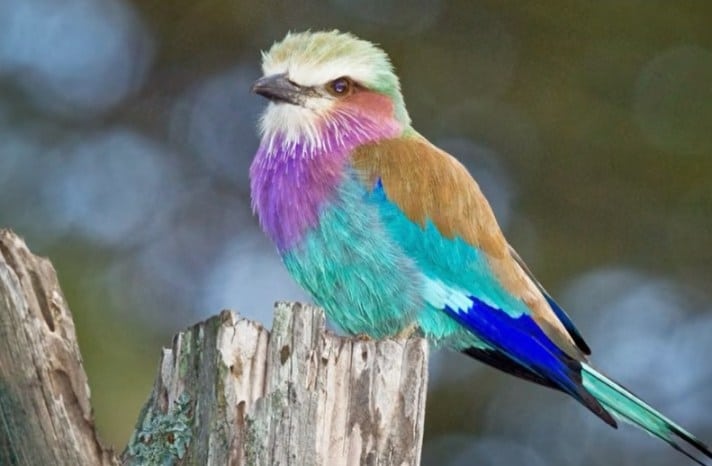
| Feature | Description |
|---|---|
| Colors | Striking plumage with a diverse mix: Male (breeding): Green crown, rusty cheeks, lilac breast, black back and wings with white markings, turquoise rump, and dark blue tail. Female & Non-breeding male: Brownish-gray upperparts with streaking, lilac throat, and blue tail. |
| Size | 32-38 cm (12.6-15.0 in) length |
| Weight | 110-150 grams (3.9-5.3 oz) |
| Tail Length | Broad, forked tail |
| Countries | Eastern and southern Africa, with vagrant occurrences in the southern Arabian Peninsula. |
| Habitat | Open woodlands, savannas, and grasslands with scattered trees or perches. |
| Eating Habits | Primarily insectivorous, feeding on beetles, grasshoppers, dragonflies, and other insects. May occasionally consume small reptiles and amphibians. |
| Mating Rituals | Elaborate aerial displays by males involving dives, rolls, and twists to attract females. Polygynous, mating with multiple females. |
| Conservation Status | Least Concern globally, but localized threats exist due to habitat loss and degradation. |
THE MEVES’S STARLING – Lamprotornis Mevesii
Mesmerize yourself with the captivating Meves’s Starling, an iridescent avian artist flitting across the African savannas. Prepare to be dazzled by its vibrant colors and captivating dance:

| Feature | Description |
|---|---|
| Colors | Male (breeding): Glossy, iridescent blue-purple plumage with shimmering highlights. Develops incredibly long, graduated black tail feathers during breeding season. Male (non-breeding & female): Brownish-gray upperparts with faint metallic sheen, pale underparts, and shorter tails. |
| Size | 22-25 cm (8.7-9.8 in) length |
| Weight | 80-120 grams (2.8-4.2 oz) |
| Tail Length | Male (breeding): Up to 30 cm (11.8 in) long, graduated tail. Male (non-breeding & female): Short tails. |
| Countries | Angola, Botswana, Malawi, Mozambique, Namibia, South Africa, Zambia, and Zimbabwe. |
| Habitat | Open savannas, preferring broadleaf woodlands like Miombo (brachystegia) and areas with baobabs. |
| Eating Habits | Primarily insectivorous, feeding on insects gleaned from the ground or caught in midair. May also consume fruits and seeds occasionally. |
| Mating Rituals | Males perform elaborate dances on the ground, displaying their long tails and iridescent plumage to attract females. Polygynous, mating with multiple females. |
| Conservation Status | Least Concern globally, but localized threats exist due to habitat loss and degradation. |
Are you thinking about buying binoculars to have a good look at all the magnificent birds of Africa?
Conclusion: The Majestic Tails of Southern Africa
There is something magical about these types of birds with long tails in Southern Africa and also worldwide, so let’s try to conserve nature and respect it, agreed?
Thoughts about these magnificent birds and questions are more than welcome in the comment section below or you can also join me on my social media channels below for more pictures, videos, and stories of my African travels 😉
I wish you happy travels and birdwatching!
Kind regards,
Lizzy
I now have a YouTube channel as well!
YouTube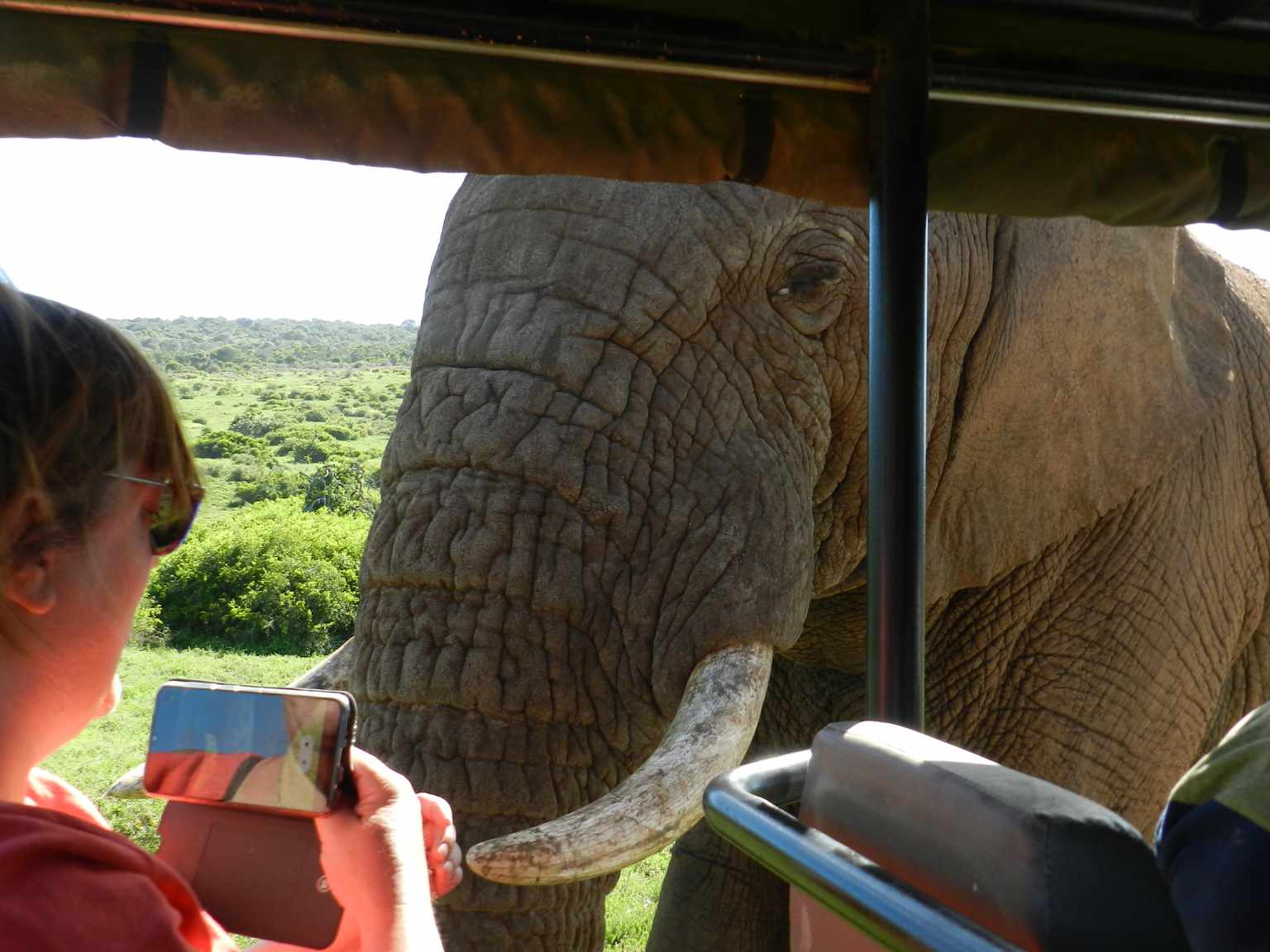
Hello Africa travellers!
Who am I? Well, the least you can say is that I am quite crazy about Africa, its nature, its climate, its culture, and more.
As a young woman in my twenties, I had already traveled to several African countries by traveling along in an overlander on my own and mostly camping ( or glamping ) and just fell in love with the diversity of it all.
So much, so that at the age of 26, I went back to university to study biology, which, unfortunately, I couldn’t finish because of health reasons (yes, I got sick from a tropical disease, oh cynicism). But this did not stop my dream of traveling back to Africa several times, and I still do.
My dream was back then to leave Europe and go study animal behavior, especially the elephants (sure, that’s every girl’s dream haha), but I am also very much intrigued by hyenas and other “ugly African animals“.
So, I “kind of” have a little bit of a scientific approach to my articles, when I write about African birds, for example. And most of all: the passion.
But life goes on, you move from one side of the country to the other, you get sick again and top it off with lower back problems, and before you know it, you are over 50 hahaha!
Now, I still travel to Africa, but take it a bit “easier” than the good old camping days, and stay in comfortable, yet affordable accommodations, together with my husband Wouter.
These are some of the countries I have traveled to: Kenya, Tanzania, Zanzibar, Malawi, Zambia, Zimbabwe, South Africa, Namibia, Botswana, Tunisia, and a little bit of Lesotho LOL .
While clearly not being African territory, but Spanish, I also visited Gran Canaria and Tenerife, and location-wise, I consider them “African”, because of their climate and nature, sue me :-p
The last trip I took was to South Africa in the year 2023, and it sure got the fevers for Africa back! From the Barberton mountains to the Drakensberg and the Southcoast, one month wasn’t enough at all to see the whole country, so we’ll be back! At ease and with a little bit more luxury than in my younger days haha!
I wish you happy travels!
Kind regards
Lizzy

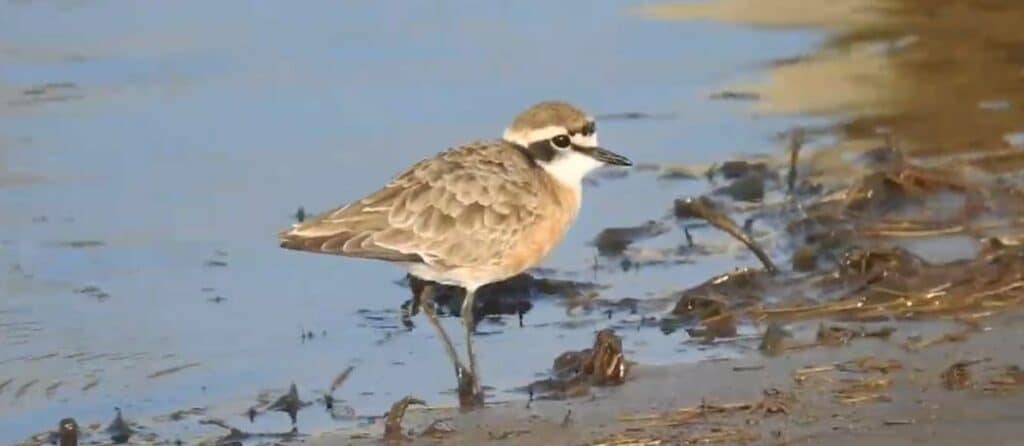
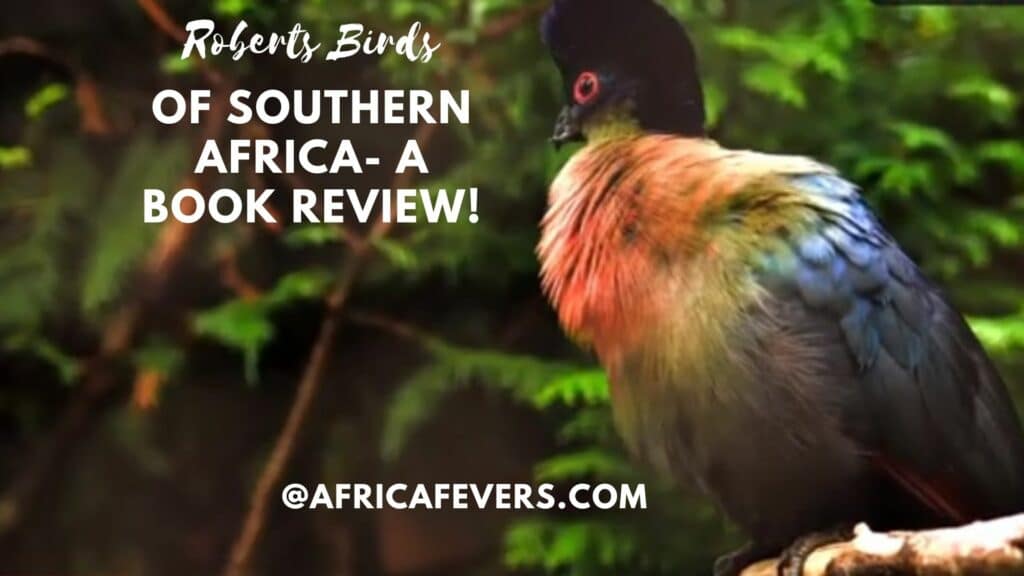
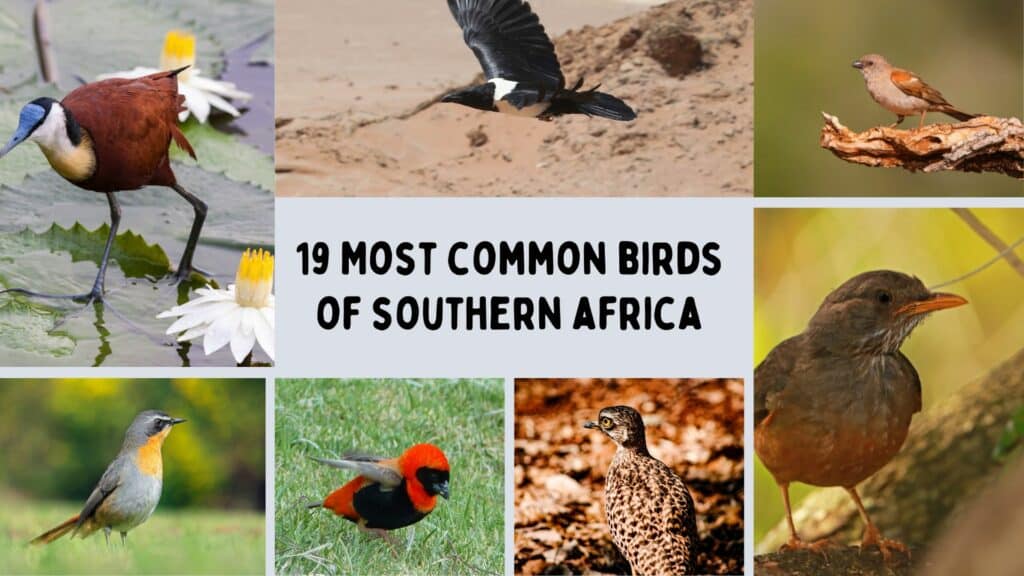
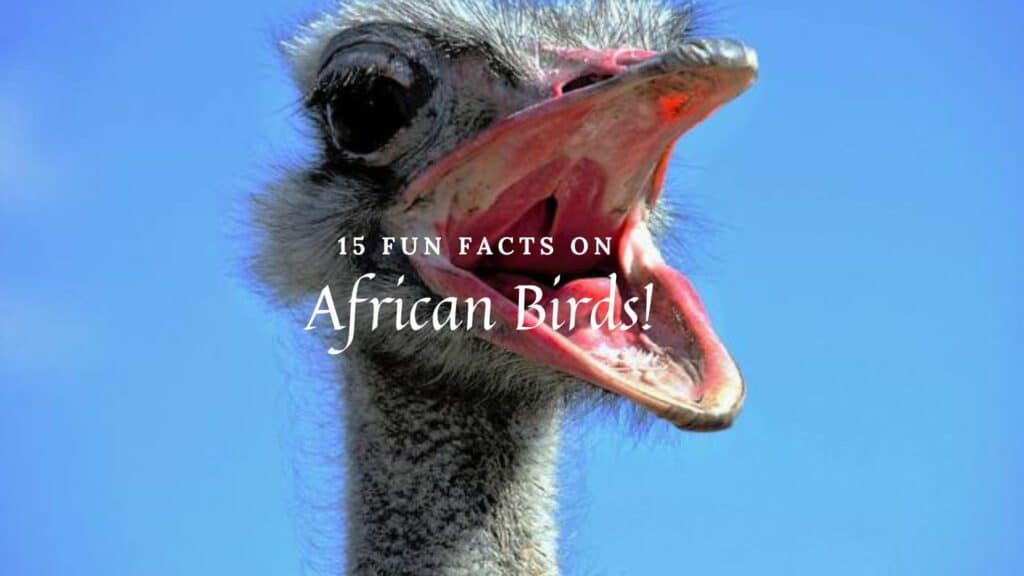
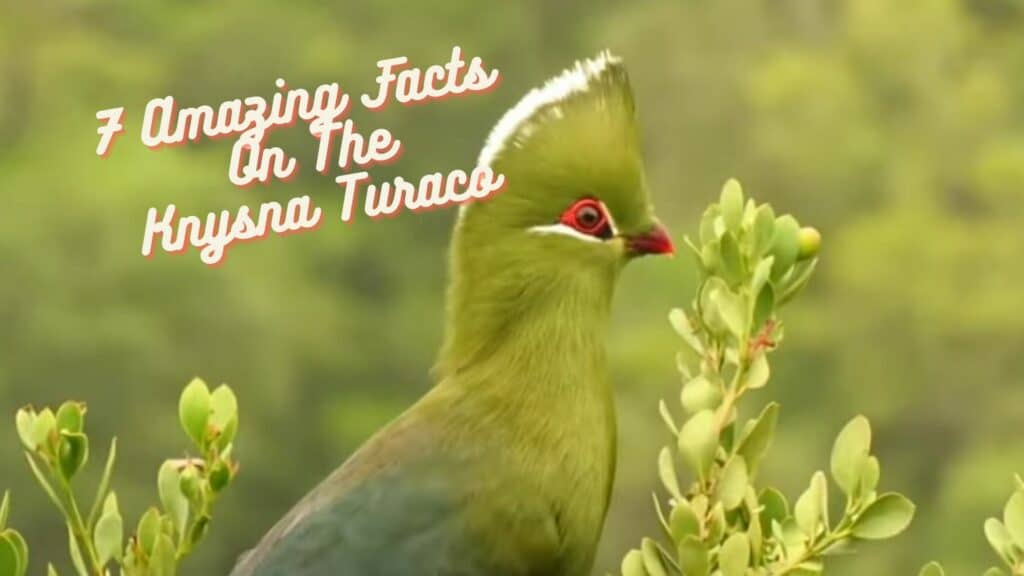

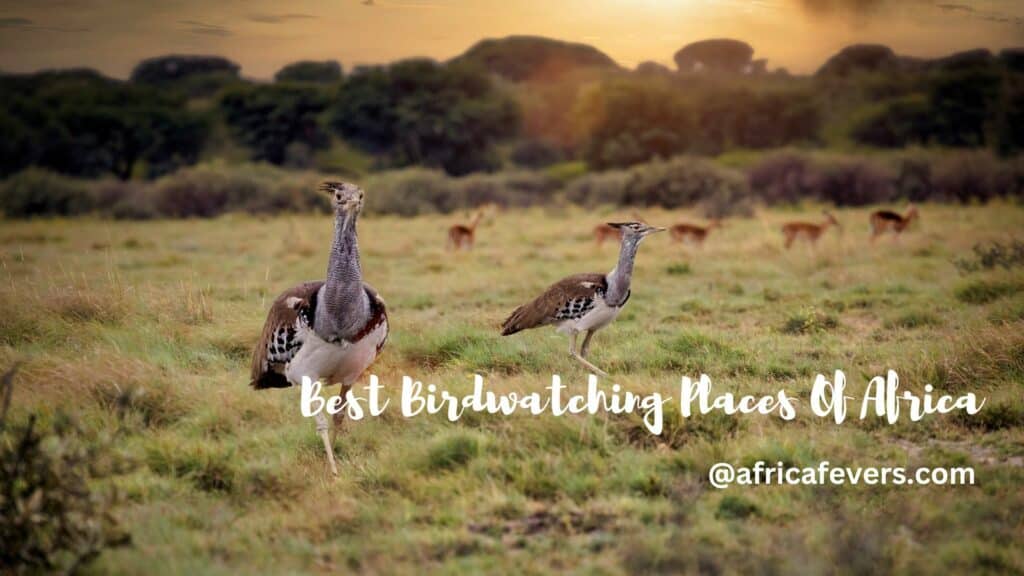



Hi, I haven’t visited this site for a little while but every time I do I learn something new. I was actually doing some research on wildlife, birds, etc to see in Africa as I am going on a work trip soon and will have some spare time to have a look around.
These birds look fascinating and I love the long tails, this article will be very good to have with me while looking around over there, this whole site actually. Its a treasure trove of information to help me know what I am looking at and the information on it.
I’ll have this book marked for my trip!!
Hi Ryan!
Welcome back, I’m glad you visited again!
Wow, a work trip to Africa, sounds great, enjoy! I’m sure that you will love everything about it, the wildlife, but also the different cultures! Did you check out this book on the identification of Southern Africa’s birds called Robert’s Birds? It is a huge help and I have almost destroyed it haha!
Have a great trip and remember to stay safe with your health!
Lizzy
Wow, what a fascinating glimpse into the avian wonders of Southern Africa! From the elegant African Paradise Flycatcher to the majestic Lilac-breasted Roller, these long-tailed birds are a true testament to the region’s rich biodiversity. Can’t wait to explore more about these magnificent creatures and their unique habitats!
Wow, what an incredible and informative post! Southern Africa’s bird diversity never ceases to amaze me, and this detailed list of long-tailed birds is absolutely fascinating. From the graceful African Paradise Flycatcher to the stunning Pin-tailed Whydah, each bird seems to have its own unique charm and characteristics. I appreciate the thorough descriptions provided, giving us a deeper insight into their appearances, habitats, and behaviors. It’s truly inspiring to learn about these majestic creatures and the vital roles their long tails play in their lives. Thank you for sharing this glimpse into Southern Africa’s rich biodiversity – I’m feeling inspired to learn more and perhaps even embark on a birdwatching adventure of my own!
Hi Bernard!
Thanks so much for your positive comment and I hope you will have some happy birdwatching in Africa soon, feel free to ask questions here if you do!
Lizzy
The long tail feathery friends of Africa! My favorite was the Shaft-Tailed Whydah, such a cute little bird. I wonder if the long tail is just for show or if it serves a purpose.
My other favorite is the Magpie Shrike, I lived in Colorado for many years and one of the native birds there is the Magpie, and they look very similar to the Magpie Shrike featured in this article, minus the long tail.
Do you happen to know if any of the birds listed have a function for that long tail or is it just for looks? I am very curious to learn the answer to this.
Stacie
Hi Stacie!
thanks for the comment,and yes, here in Europe, we also have similar Magpies, but not with such a long tail either, nature is intriguing, right? 🙂
Long tails have several purposes,but these are in short the main ones:
Picture this: they use them to balance and navigate gracefully through the air, almost like skilled acrobats.
Plus, during those romantic courtship dances, the males flaunt their tails like flashy accessories to woo potential mates.
But it’s not just about style; those tails also provide some serious camouflage, helping them blend into their surroundings and stay hidden from predators.
And when the weather gets chilly, they can even use their tails to regulate their body temperature, like a built-in thermostat. It’s like having a Swiss Army knife attached to their backs!
On top of all that, the length and shape of their tails help them recognize their buddies and rivals, and they can even put them to work while foraging for food.
I hope that answers your question!
I wish you happy birdwatching!
Lizzy